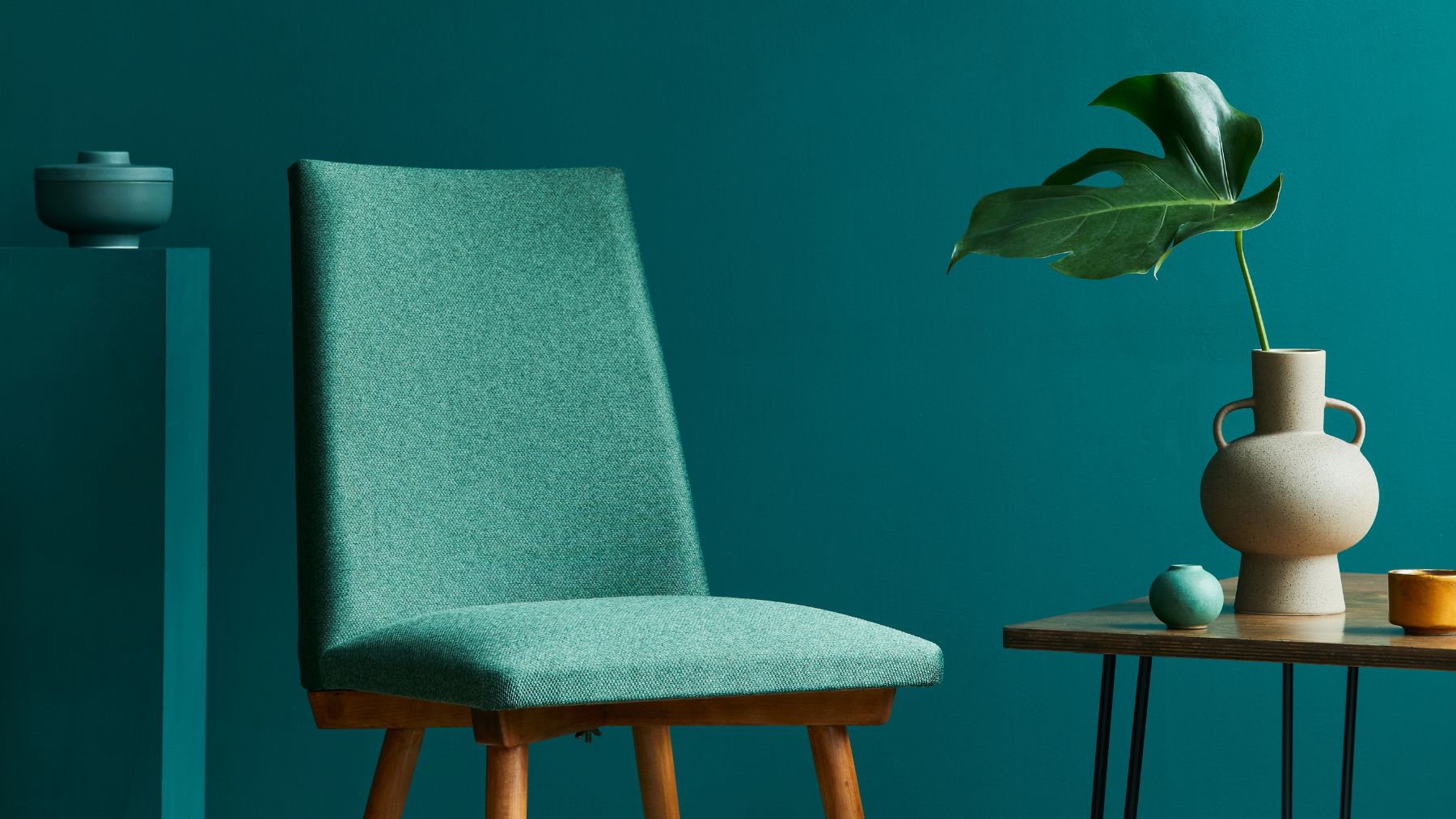The Psychology of Colour in Home Decor: A Guide to Choosing the Right Colours for Your Space

Imagine stepping into a bedroom that instantly makes you feel calm and relaxed; or a home office that makes you feel inspired. Colours can have a profound effect on our psychology, influencing our moods, behaviours, and perceptions of the space around us. In fact, if you’ve been considering a home renovation, you’d be surprised at how much a simple change of colour may change your mind! And harnessing the power of these colours in our decor can help create a more harmonious and emotionally engaging environment at home!
Psychology of Colour 101
Before implementing the psychology of colour in our home decor, we must first understand the basics behind it. Each colour tends to have its own distinct emotional spectrum associated with it. Here are a few of the most common:
Blue is most often associated with calmness and tranquillity. It offers a soothing sense of security, making it an excellent choice for bedrooms where we want to promote relaxation.
Yellow is a vibrant colour associated with vibrant feelings, like happiness and positivity. Creating a warm environment, it is an excellent choice for kitchens and entertaining spaces.
Green is the colour of nature and growth, encouraging an atmosphere of balance and harmony. It is a lovely choice for living rooms and nurseries!
Red is a passionate and stimulating colour and has been shown to raise energy levels and promote lively conversation. This makes it well-suited for dining rooms and other rooms in your home where you want to encourage interaction.
Purple has a long-standing association with luxury and creativity, which makes it great for home offices or rooms where you want to add a touch of sophistication.
Orange combines the energy of red with the warmth of yellow, creating excitement and enthusiasm. These can be particularly useful emotions for home gyms or playrooms!
Neutrals—like white, grey, and beige—invoke feelings of openness and flexibility. They are like a blank canvas to the mind, which is why so many real estate professionals will recommend them if you want to make a good first impression when selling your home.
Setting the Mood with Colour
When choosing your home decor, it is essential to keep in mind the atmosphere you want to create in each space. For rooms where you want to feel calm and relaxed, like bedrooms and reading nooks, choose soft blues, greens, and muted neutrals. For spaces meant for creativity and productivity, like home offices and craft rooms, add a splash of vibrant red, orange, or yellow. Warm tones, like earthy browns and golden yellows, are great for living rooms where you want things to feel cozy and intimate.
Cautions to Keep in Mind
While the prospect of creating emotional influence with colour can be exciting, it is important to keep harmony in mind. True, incorporating a variety of colours into your home decor can create a visually dynamic environment. But it can also be overstimulating if not balanced well.
Before donning your painting clothes and a brush, experiment with colour combinations to find ones that complement each other. Refrain from using too much of any intense colours, and aim for a conservative approach. For every one or two dominant colours (like the 2023 Pantone Colour of the Year, Viva Magenta), complement them with softer, neutral tones.
It is also important to note that while the psychology of colour does offer general insights into how different hues can influence emotions, there is a level of subjectivity to it. Personal experiences, memories, and cultural backgrounds can also shape how we perceive and react to colours. There is no hard and fast rule to colour psychology, only observation.
Using the psychology of colour in home decor can be a powerful tool in elevating your living spaces from just rooms to emotionally engaging sanctuaries. By understanding the emotional impact of colours and how they work together, you can create an environment that resonates with your personality and supports your desired moods. Remember: the beauty of colour lies not only in aesthetics but in the emotional connections they forge within us—making our homes truly special places where memories are created and cherished.
Spring Into Indoor Plant Care

Hey, plant-loving people!
It’s springtime, and you know what that means – it’s time to dust off those green thumbs and prepare your indoor plants for the season! Here are some tips that will help your plant babies bloom and thrive:
Brighten up their day:
Just like you, plants need their daily dose of sunshine. Find a bright spot in your house where they can soak up some indirect sunlight without getting scorched. And if you’re feeling extra fancy, rotate them occasionally to keep them growing evenly.
Give them a drink:
Your plants may be thirsty, but don’t go overboard with the H2O. Remember that drowning them is just as bad as leaving them thirsty. Check the soil every few days and only water them when the top inch is dry. And don’t forget to drain any excess water from the pot to avoid root rot!
Feed them some love:
Spring is the perfect time to show your plants love with a little plant food. You can pick up some organic fertilizer or try a liquid fertilizer for a quick boost. Just be sure to read the instructions and follow the recommended dosage.
Keep them cozy:
As the temperature fluctuates, ensure your plants aren’t feeling the chill. Keep them away from drafty spots and avoid placing them too close to the heater. You don’t want your plants catching a cold, do you?
Give them a haircut:
Like your hair, your plants need a trim every now and then. Pruning helps keep them healthy and encourages new growth. Grab sharp scissors and snip away any dead or dying leaves or branches.
Give them room to grow:
If your plants are feeling a bit cramped, give them some more space by repotting them. This will help them stretch out their roots and get some fresh soil to play in. Plus, it’s always fun to pick out a new pot, right?
Pamper those leaves:
Dust can accumulate on your plant’s leaves, which can make it harder for them to breathe. Give them a spa day by wiping them down with a damp cloth or a soft brush. They’ll thank you with some extra-pretty foliage.
There you have it, folks! With these tips, your indoor plants will flourish in no time. Happy planting!
If you need a great new home to display your plants in, contact me today!
Incorporate Viva Magenta Into Your Home

Pantone releases a Colour of the Year in January, and in 2023 the colour is Viva Magenta. This bold hue represents the challenges and joy in our ever-changing world. Finding ways to incorporate this colour into your home might seem challenging, but here are a few simple ideas to try for yourself!
Accent Wall or Feature Wall
If you want to add Viva Magenta to a room without it feeling like an overpowering colour, consider painting one accent wall. Another great option to break up the colour is to select a vibrant decorative wallpaper with magenta accents. Think about what other complementary colours you will decorate the room with—lighter shades of blues, pinks and purples can subdue and highlight the colour.
Furniture and Accessories
Furniture in the colour Viva Magenta would make a lovely accent piece in a room, whether it be a chair, ottoman or sofa. Choose contemporary furniture with curves and lines that draw the eye in without making the colour feel overwhelming. If you aren’t ready to commit to such a bold colour, a slipcover over existing furniture would be an easy, cost-effective way to add it. Use smaller Magenta accessories to display, like coffee table books or a vase in soft pink or purple for extra interest.
Artwork and Decorations
If the ideas above are still too ambitious for you, there is always artwork and small decorations for a pop of colour. Look for abstract art featuring complimentary colours or vibrant Magenta. Vintage prints come in rich colour palettes, or search for vintage muted tones like soft pastels to keep in the Magenta theme. Decorations such as pink candle holders or small photo frames—little touches can bring together the whole design.
Create Contrasting Color Combinations
Viva Magenta pairs well with various colours but, when used minimally, can create a strong contrast within its own colour family. Colours like shades of yellow or even sunny yellow can create a unique stand-out effect. Opt for lavenders, pastel pinks or deep purples for a subtle yet rich combination of colours.
Pantone’s Colour of the Year, Viva Magenta, is a bold statement colour but has a lot of versatility. Try incorporating it into your home to create a modern, classy look. Whether you paint the walls or find a great accent piece, this colour will energize any room.
If you need help finding a home, contact your local realtor today!
Design Trends We Can Leave in 2022

Trends come and go throughout the years. Here are the trends that are on their way out in 2023.
Hard-Edge Furniture
Curved furniture is still dominating the interior design space. Hard-edge, clean-line furniture is making its way out. However, instead of completely removing these hard-edge space-saving furniture pieces, dress them up with curved accents, such as round cushions, round coffee tables and textured throw blankets. Pairing furniture with these accents can create balance, depth of space, and coziness.
Rounded Fuzzy Textured Statement Pieces
Fuzzy textured chairs and couches were all the rage in 2022, and the end is in sight for these pieces. While not only being hard to clean, their uniqueness feels dated and drab for the new year—skip this trend in 2023. If you have one or two of these fuzzy chairs or couches, don’t eliminate them, as there is still a trend for round pieces next year. Dress them up with flat fabric throws and cushions.
Monochromatic Minimalism
Monochromatic decor has no personality and a cold quality that needs to be left behind this year. Its over-simple and sparse furniture placement leave little to be desired. Opt for more colours, patterns and boldness in 2023 to bring out your personality in each room.
All-White Kitchens
It is sad to see them go. All-white kitchens are losing popularity this coming year. Although they remain a classic colour palette and an excellent base, to begin with. Homeowners are leaning towards a more kitschy kitchen in the new year, with bold accent colours on the walls and the cabinets. Think of fun tile backsplashes, curtains and plants!
Industrial Hardware
Matte-black plumbing and hardware that coincides with the monochromatic theme are far too casual for the new year. Now that people are dressing and going out again, so are their homes following suit. Polished metals such as chrome and brass are making a comeback and will take center stage in 2023.
Plain Door Frames and Moldings
In 2023 we are looking at vintage homes with interesting architectural elements, such as unique moulding, wider doors and archways. Modern box frame doors have been in for several years, but a shift is coming to create more dynamic living spaces starting with the door frames. Mouldings and cases also avoid contemporary hard edges and opt for scalloped or pentagon shapes.
Before you go and renovate your entire home to fit these trends, you may want to consider just dressing up the existing pieces or fixtures you have–even a fresh coat of paint can make a massive change to a room.
If you need to find a home in the new year, contact your Local REALTOR®.
9 Tips for Surviving the Holidays

Every Holiday season is stressful, with the busyness between meeting up with friends, family and even those Christmas work parties. The feeling of being stretched out thin is inevitable—with the help of these 9 tips, I hope your holiday season can be as stress-free as possible.
Online Shop
Skip all the lines and circle the parking lot, and shop online. Not only is everything you could ever want at the tip of your fingers—but it also conveniently arrives at your doorstep. Frequently online shopping allows for gift-wrapping options. Take full advantage of that service!
Celebrate Minimally
Try to alleviate stress by planning fewer get-togethers and easier ones to host—even better yet, try to avoid hosting altogether and be a guest. If you are hosting, go to the fancy dining and centrepieces, and opt for guests to bring their dish, potluck style and keep decor to a minimum.
Only Buy for the Kids
Purchasing gifts for people can be a huge challenge, from deciding what to get everyone to the financial burden. Skip the adults and only buy for the kids of the family. Children will appreciate the gifts more, and it is more fun to buy and watch them open them. Speaking of gifts, opt for gift bags and tissue paper to save time wrapping.
Minimal Christmas Decorations
A Christmas tree is all you need to set the Christmas mood. Try not to go overboard with too many decorations. If you want to change things up, make your own decorations, from popcorn garland to paper snowflakes—get the whole family involved.
Prepare in Advance
Preparation is your best defence to combat holiday stress. Up until Christmas, pre-bake and pre-cook as many things as possible for the big day. Make lists, plan all your meals, and stock up on extra snacks for drop-in guests. Consider getting some chocolate boxes and small monetary gift cards to have on hand if you’ve missed a gift here or there.
Stock Up in November
The end of November is quickly approaching, so hopefully, you already have some things stockpiled and prepared. Surviving the holiday season means gathering everything you need before the holidays are in full swing—stock up on the essentials like gifts and beverages before the store madness begins. You can easily do this before the start of December.
Call People vs Christmas Cards
Instead of taking time out of your busy schedule to write and order Christmas cards—give those essential people in your life a call before the holiday craziness begins. You may not have talked to friends and family for a while, now’s your chance, even sending off a Facebook message might spark a delightful conversation.
Make Plans in Advance and Re-confirm
Plans are the key to a successful get-together. Make plans days or weeks in advance with your expected company. Re-confirm several times if certain people require it, and re-confirm a few days in advance to ensure everyone is on the same page.
Plan Ahead for DownTime
Regarding schedules, incorporate some quiet downtime into your busy schedule—whether a walk together or alone, a fun family activity like skating or building a snowman, or a drive around the neighbourhood to look at the Christmas lights.
Don’t Sweat the Small Stuff
Nothing in life is perfect, and if you expect everything to run smoothly and go as planned, you are sadly mistaken. Don’t let the little things get in the way of your enjoyment of the holidays. Keep plugging away bit by bit until it’s over.
There you go. I hope you are ready to combat the holiday season with these 9 helpful tips. All we can try is our best and make it through to January.
If you need a home to celebrate the holidays in, contact your local REALTOR®.
Discover How Winter is the Best Time to Sell Your Home

Unlike popular belief, winter can be a perfect time to sell your house. Please keep reading to find out how it is advantageous to list your home as it gets colder.
Winter Spawns Serious Buyers
As the snow falls and temperatures start to plummet, people start to leave their homes less. In spring and summer, it’s easy to attract people to view your home, but how many of them are serious about purchasing it?—verses when you host an open house or a showing in winter when people show up, you know they are serious buyers.
Winter weeds out the tire kickers from the dedicated clients.
Less Competition
In winter, fewer homes are on the market, reducing the competition significantly. As long as the demand is there, you could sell your home faster than in warmer months because fewer options are available.
Highlight Your Homes Energy Efficiency
If you have lived in your property for a few years, you might have significantly upgraded your home. These improvements might include energy-efficient upgrades like a new furnace or windows. When selling in winter, highlight these investments in your listing that could save the new owner money in the long run.
Other key features to show off in cold weather, such as a hot tub or fireplace, are lovely ways to beat the winter chill and have buyers wanting to feel cozy.
The days are getting shorter, and the snow has started to fly, making it the perfect time to sell your home. I hope this blog has sparked your interest to list your home in winter to get in on the hot seller’s market.
BONUS TIPS :
Check out these other sure-fire ways to attract home buyers.

 Facebook
Facebook
 X
X
 Pinterest
Pinterest
 Copy Link
Copy Link



